On Saturday, 125 civilians evacuated from Korabel microdistrict in Kherson





Russians forcibly conscript Ukrainians, coercing them into fighting against their own country. The Russian 132nd Separate Motorized Rifle Brigade is now fully staffed by residents of the temporarily occupied parts of Donetsk Oblast and illegal migrants, according to the DeepState project.
Russia is transforming occupied Ukrainian regions into military bases for further aggression. For example, the Azovstal steel plant in Mariupol, Donetsk Oblast, which sheltered the city’s defenders in 2022, has now been converted by Russia into a hidden base, using its bunkers and underground shelters.
According to the report, the 132nd Brigade has long been predominantly staffed by residents of the occupied settlements of Donetsk Oblast. Recently, it has been massively reinforced with illegal migrants, mainly from Central Asian countries.
This information is particularly alarming amid ongoing US-Russia negotiations. US President Donald Trump openly states that a peace deal would include some “swapping” of territories with Russia. This means that Russia can further conscript more people from occupied territories to the war against their relatives, friends, and other Ukrainians.
“The Russian command has set the task to reach the eastern outskirts of Dobropillia in the near future,” analysts say.
The invaders aim to capture Dobropillia because it is the last major city before Pokrovsk in Donetsk Oblast, where Russia has concentrated nearly 100,000 soldiers. Taking Dobropillia would allow them to shell logistics routes to Pokrovsk and open the way for further attacks on Kostiantynivka.
DeepState also emphasizes that the 132nd Brigade has historically consisted mainly of marginal elements and criminals from the occupied districts of Donetsk since 2014, while the command has come directly from Russia.
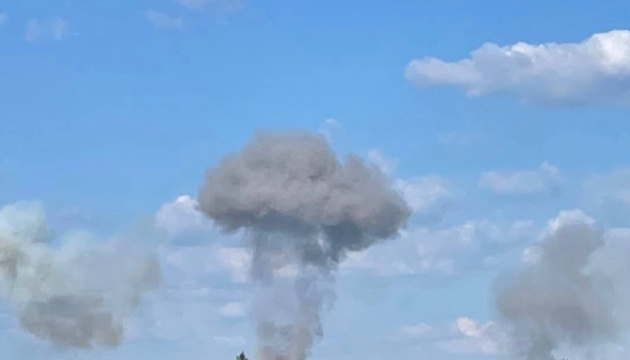





At the Yaroslavl Shipbuilding Plant in Saint Petersburg, modern Russian naval tugboat Kapitan Ushakov capsized and partially sank alongside the Baltic Shipyard’s pier. The event caused flooding in the auxiliary machinery spaces, the Russian Western Interregional Investigative Directorate for Transport reports.
This incident marks another setback for the Russian Navy. Since 2022, Ukraine has destroyed approximately 33% of the ships of Russia’s Black Sea Fleet. The most painful loss was the sinking of the cruiser Moskva, the flagship of the Russian fleet. In 2022, it struck Ukraine’s Zmiinyi (Snake) Island after Ukrainian border guards refused to surrender, famously declaring: “Russian warship, go f*** yourself!”
According to the agency, no injuries were reported. However, the extent of the damage is still being assessed. The agency is investigating potential safety violations during the construction work.
The tugboat was launched on 14 June 2022, but it was under final construction and outfitting for another three years in Saint Petersburg. It is designed for towing ships in icy and open waters, escort operations, firefighting at sea, and refloating grounded vessels.
It measures nearly 70 meters in length, 15 meters in width, and 3,200 tons in displacement. The tug can sail up to 3,000 nautical miles with a 30-day autonomy and features a helipad.
Earlier, Russia canceled its main naval parade of the year in Saint Petersburg. The parade cancellation might have been linked to the military leadership’s fears due to real losses suffered by the fleet. An event meant to demonstrate Russia’s power risked having the opposite effect, causing discouragement and fear.




Ukraine’s Security Service (SBU) confirmed on 9 August that its long-range drones struck a Shahed storage facility in Russia’s Tatarstan republic, destroying ready-to-use attack drones and foreign drone components 1,300 kilometers from the Ukrainian border.
The strike targets Russia’s expanding drone production network that now manufactures over 5,000 Shaheds monthly and launches nightly swarms of 100+ drones to build reserves before unleashing massive coordinated attacks of 500+ drones against Ukrainian cities.
Russia’s Republic of Tatarstan is home to the main production facilities for Shahed drones used by Russia. The largest factory is located near the city of Yelabuga, specifically within the Alabuga Special Economic Zone.
According to Dnipro OSINT, the strike was carried out using a Liutyi drone. This drone has carried out accurate strikes on Russian oil refineries as far as 800km into Russian territory. Ukrainian sources report that the Liutyi accounts for up to 80% of precision hits on Russian oil refineries.
“The Security Service continues its consistent work on demilitarizing Russian military facilities deep in the enemy’s rear. Storage warehouses for ‘Shaheds’, which the enemy uses to terrorize Ukraine every night, are one of the legitimate military targets,” the SBU stated.
The agency adds that each such successful special operation reduces Russia’s ability to wage a war of aggression against Ukraine.
This strike continues Ukraine’s systematic targeting of Russia’s drone production network throughout 2025, striking warhead labs, antenna plants, and control system factories deep inside the country.
In recent months, Russia has adopted a new strategy of launching 100+ Shahed drones per night for one or two nights while producing even more daily to build up reserves.
Once stockpiles are sufficient, they unleash massive waves of over 500 drones in a single night, combining Shaheds with decoy Gerber drones designed to overwhelm air defenses and target multiple cities simultaneously.
The August 9 operation follows previous Ukrainian strikes on Shahed infrastructure, including January strikes that destroyed over 200 Shahed drones in storage facilities in Russia’s Oryol Oblast and attacks on the Yelabuga industrial zone, which houses Russia’s largest known Shahed production facility.
Russia has launched thousands of Iranian-designed Shahed drones against Ukraine since fall 2022. Western media reports each Shahed-136 drone costs as low as $20,000, making them cost-effective weapons for mass attacks on Ukrainian infrastructure and cities.
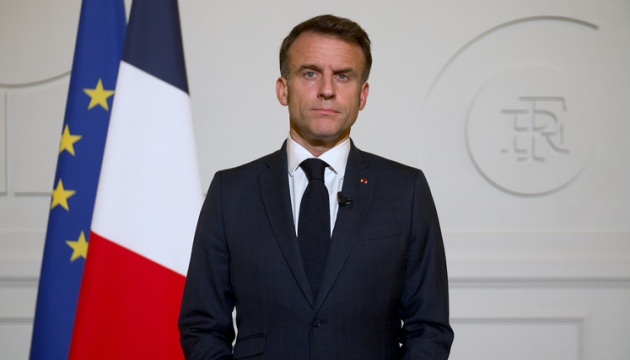

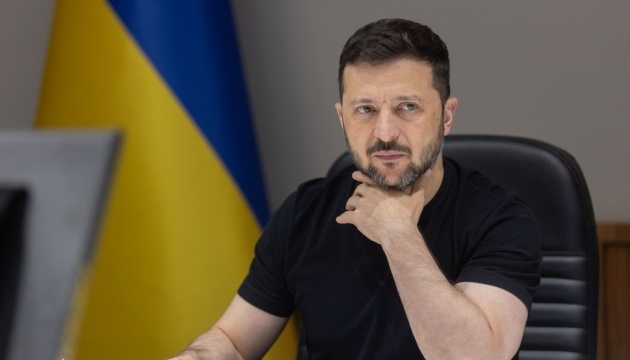


Editorial: The Russian president is the obstacle to a negotiated settlement in Ukraine and to end the bloodshed he must make concessions

© Reuters
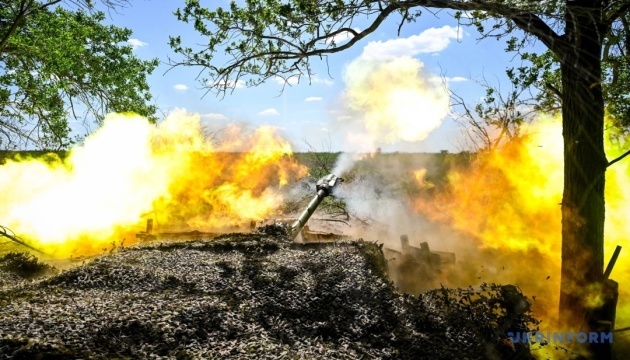



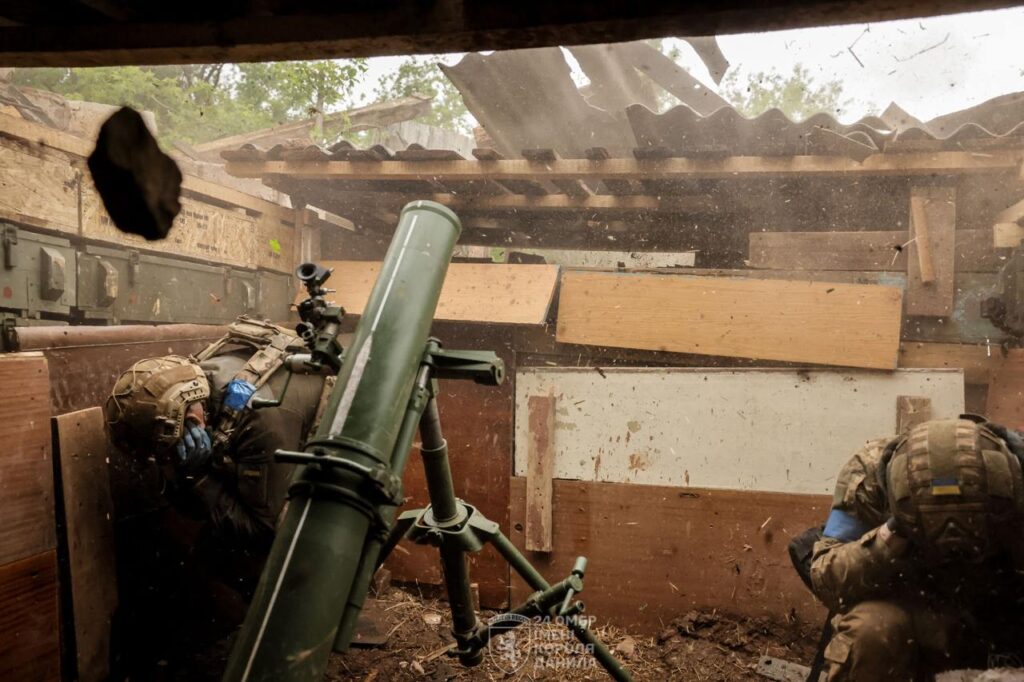

Ukrainian President Volodymyr Zelenskyy has firmly rejected US President Donald Trump’s proposal to exchange part of Ukraine’s territory in return for peace. Trump’s suggestion, which did not specify which areas might be swapped, struck a nerve with many Ukrainians, The New York Times reports.
The results of ongoing US–Russia negotiations over the war in Ukraine remain largely secret, fueling uncertainty over what security guarantees the West might offer Ukraine in exchange for concessions to Russia. Kyiv warns that without firm security guarantees, Moscow will quickly break any deal, as it did with the Minsk agreements, which ended in all-out war and “temporary ceasefires” that turned into bloodshed.
Zelenskyy’s direct refusal risks angering, who has made brokering a peace deal between Kyiv and Moscow one of the central goals of his foreign policy, even if the deal would disadvantage Ukraine.
“Peace as trap”: Ukraine may face pressure from US and Russia to accept Kremlin’s demands, says diplomat
This could leave Ukraine vulnarable to concessions it may need to make amid Kyiv’s dependency on Western aid and weapons in the struggle against Russia.
Trump has previously accused Ukraine of making excessively tough demands for a ceasefire. This time, he stated that some territories would need to be swapped and returned. There will be an exchange of territories for the benefit of both sides, he said. His vague comments sparked widespread outrage among Ukrainians.
Zelenskyy’s stance reflects the overwhelming sentiment in Ukrainian society: territorial concessions are unacceptable. A Kyiv International Institute of Sociology poll found that over half of Ukrainians believe the country should not cede any land “even if this makes the war last longer and threatens the preservation of independence.”
Military experts warn that such a deal would mean abandoning a key fortified defensive line in northern Donetsk Oblast, between Sloviansk and Kostiantynivka, which has so far held back Russian advances.
Trump has agreed to hold peace talks next Friday in Alaska. For now, Moscow’s approach, not Kyiv’s, appears to have the upper hand on the diplomatic front.
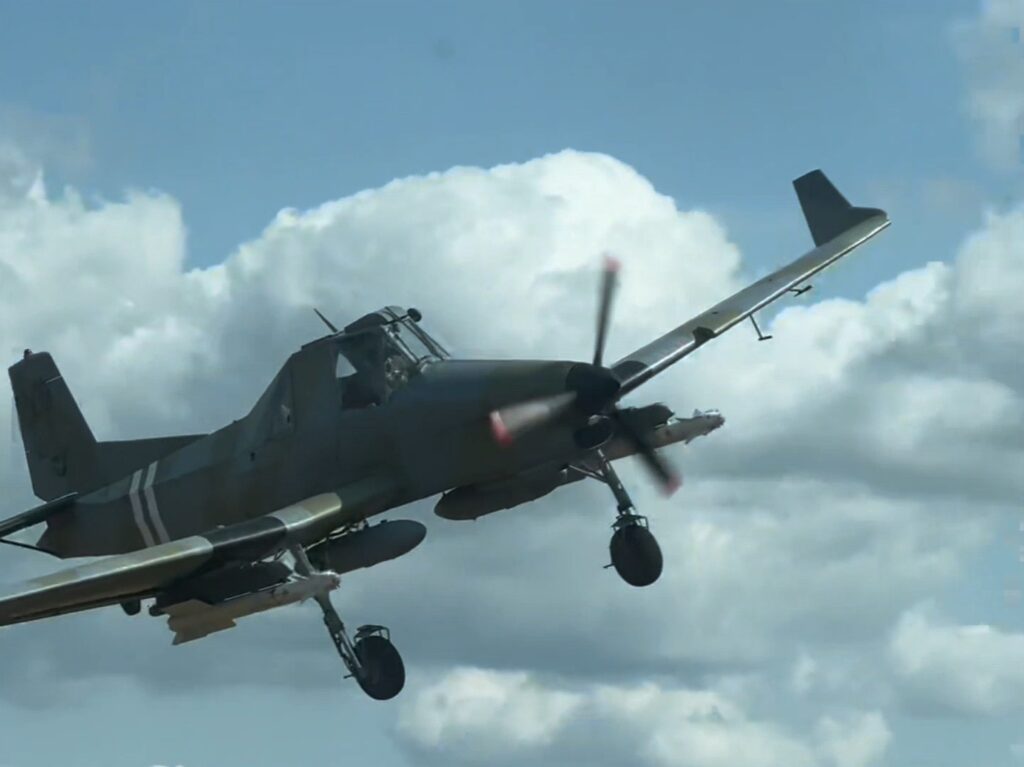

Ukraine has begun using the Czechoslovak Z-137 AgroTurbo to intercept Russian drones in its ongoing air defense campaign. Militarnyi reports that the agricultural aircraft has been modified with air-to-air missiles and is now working in coordination with radar teams to protect Ukrainian skies.
This comes amid Russia’s daily drone and missile attacks, targeting Ukrainian cities.
Local residents recently filmed a modernized Czechoslovak Z-137 AgroTurbo flying with two short-range R-73 missiles mounted under its wings. The single-engine turboprop, originally designed for cropdusting, has been repurposed for air defense missions. Its tail now carries two white cross stripes, a marking typical of army aviation, Militarnyi notes.
Militarnyi says that the R-73 missile does not require complex radar integration. It uses an infrared homing system to lock onto a heat-emitting target on launch. The conversion requires only a power feed and a launch command link to the pylon. Once fired, the missile’s seeker head automatically tracks its target.
According to Militarnyi, pilots of the modified Z-137 can receive target updates from officers at combat control points who have access to ground-based radar data. These controllers can direct the aircraft’s heading and altitude to position it for interception.
The Z-137 AgroTurbo can reach speeds of 200–250 km/h. Militarnyi reports that this makes it suitable for engaging Russian Shahed drones and short-range reconnaissance UAVs. Using such turboprops allows the Air Force to conserve faster fighter jets for higher-priority missions.
Commander-in-Chief of the Armed Forces of Ukraine Oleksandr Syrskyi previously confirmed that light aircraft are now in service for counter-drone operations. He said the projects are funded with foreign partner support and will be expanded. The military is also receiving modern light aircraft equipped with advanced weapons and navigation systems to increase the effectiveness of countering Russian drones.
In June, Ukraine had received its first light aircraft configured for electronic reconnaissance and warfare against Shahed-type drones. The Czechoslovak Z-137 AgroTurbo’s new role adds to this growing network of non-traditional aerial defense assets.
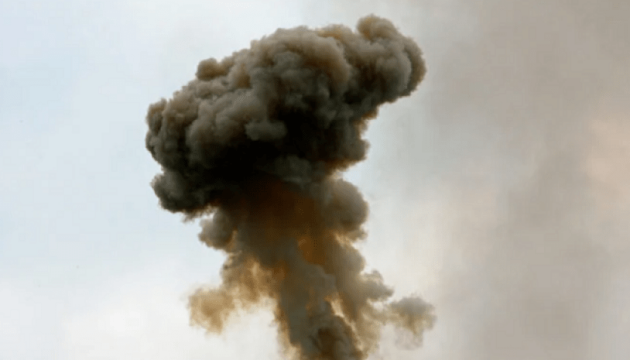

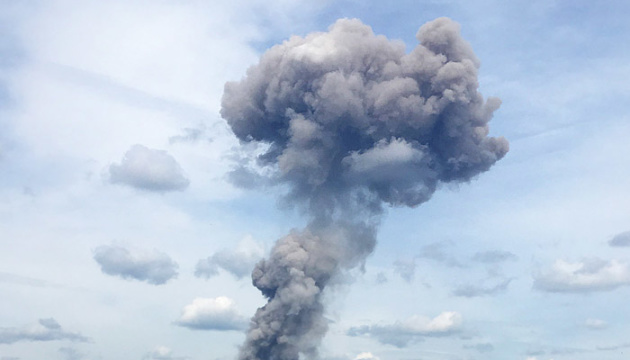



Kyiv is working to resolve a humanitarian crisis near the Georgian border, which the Ukrainian Foreign Ministry says was deliberately designed by Russia. Ukrainian citizens ended their hunger strike after meeting with Ukrainian representatives at the Dariali crossing, but 96 people are still remain trapped at the facility without food, shelter, and medical support.
Since June, Russia has deported nearly a hundred Ukrainian citizens, primarily former prisoners from occupied Ukrainian territories, to the Georgian border, instead of directly repatriating them to Ukraine. Meanwhile, Tbilisi denies their entry due to security and documentation concerns. The situation can worsen the relations between two countries, which try to break away from Russia’s influence.
“Our state is ready to take its people directly, rather than via Georgia and Moldova,” Ukraine’s Foreign Ministry states.
Russia is ignoring Kyiv’s request, which indicates Moscow’s desire to deliberately create a humanitarian crisis on the Russian-Georgian border, authorities say.
This systematic campaign has resulted in 96 Ukrainians being stranded in a buffer zone at the Dariali checkpoint. Desperation mounted as some deportees announced a hunger strike on 5 August, demanding permission to cross into Georgia after being held in cramped conditions.
Many deportees are former prisoners with criminal backgrounds, creating legitimate security concerns for Georgian authorities while leaving the individuals trapped without legal status.
A representative of the deported Ukrainian citizens “expressed gratitude to the diplomatic mission for efforts to resolve the humanitarian crisis artificially created by the Russian side,” Ukraine’s Foreign Ministry reported after the hunger strike ended.
Ukraine successfully evacuated 44 citizens from the border zone since late June, but Russian deportations continue outpacing rescue efforts as Moscow maintains pressure on regional cooperation mechanisms.
The Ukrainian Foreign Ministry notes that most deportees are “people who have previously been brought to criminal responsibility,” including those who served sentences in occupied Ukrainian territories and were forcibly transferred to Russian facilities, as well as Ukrainian citizens convicted of crimes within Russia.
The crisis intensified when Moldova temporarily suspended transit for this category of deportees, eliminating the main evacuation route and leaving more people stranded at Dariali with no clear path home.
Georgian authorities have expressed willingness to transport the deportees to Tbilisi Airport, but only after Moldova confirms readiness to receive them as transit passengers, according to reports.


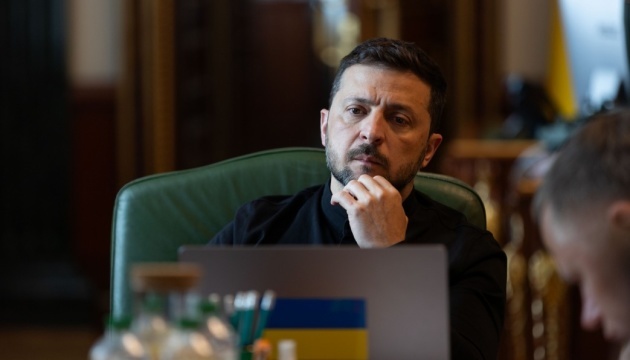

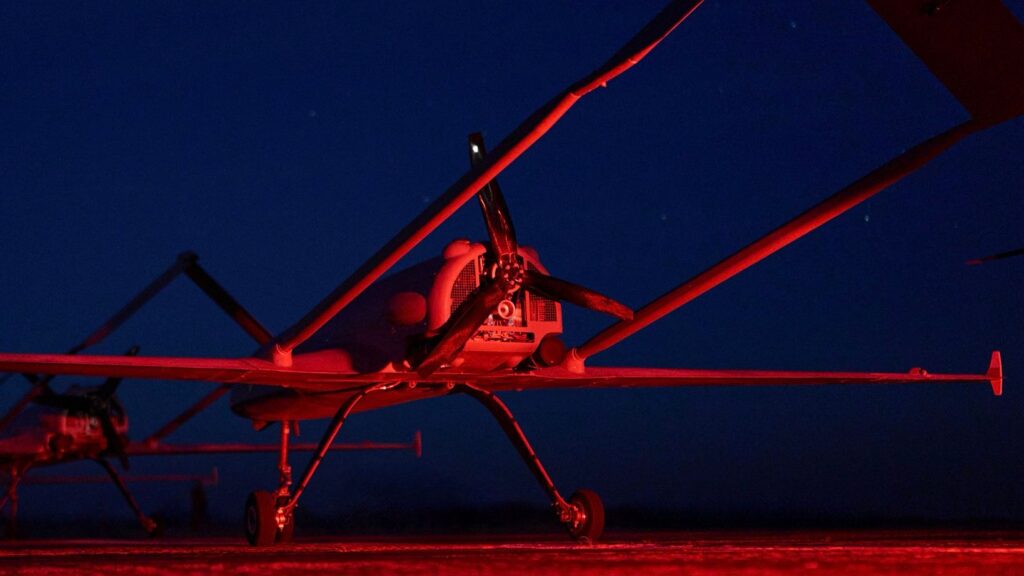

Ukraine’s deep strikes are becoming more destructive. The main reason, it seems, is the combination of a largely German-funded attack drone—and the powerful warhead, or warheads, it can carry.
As recently as last year, the Ukrainian military and its supporting agencies—in particular, the state security service, or SBU—struggled to make an impact with long-range drones. “More than half of the recorded strikes between September and February had limited impact,” Ukrainian analysis group Frontelligence Insight concluded in a March study.
But that’s changing as more and better drones with bigger and better-designed warheads strike more frequently many hundreds of kilometers inside Russia.
Tatarigami, Frontelligence Insight’s founder, recently sensed the change. “Based on an early look at several dozen hits over the past two weeks, both the success rate and damage from Ukrainian long-range drones have gone up compared to late 2024 [to] early 2025,” he wrote. “I haven’t put together the data set yet, but even at a glance, the results already look different.”
In recent weeks, Ukrainian drones have hit Russian airfields—destroying several warplanes and helicopters—while also blowing up key components of the refinery in Novokuibyshevsk, which accounts for around 3% of annual refining in Russia.

Thanks in large part to German largess, Ukrainian firm Ukroboronprom is building hundreds more of its best An-196 Liutyi attack drones than it had planned earlier this year.
According to German newspaper Die Welt, the government of German Chancellor Friedrich Merz is providing around $100 million to pay for 500 of the propeller-driven, satellite-guided Liutyi drones. A Liutyi carries an approximately 50-kg warhead farther than 800 km. The $200,000 drone can follow a complex flight path and change altitude in order to avoid Russian air-defenses.
Early Liutyi models may have had comparatively simple and light warheads. “One contributing factor” in the limited effectiveness of drone strikes in 2024 and early 2025, Frontelligence Insight concluded, “is the relatively small warhead size of certain Ukrainian drones, such as the Liutyi.”
For comparison, a Russian Shahed drone carries a 90-kg warhead.
It’s possible Ukroboronprom has been improving and enlarging the warhead on the An-196. Roy, a Canadian drone expert, recently observed a 60-kg OFB-60 warhead apparently recovered from the wreck of a crashed Liutyi. “The 60-kg high-explosive shaped-charge munition has a concave metal face for forming an … explosively formed projectile” that can punch through metal, Roy noted.
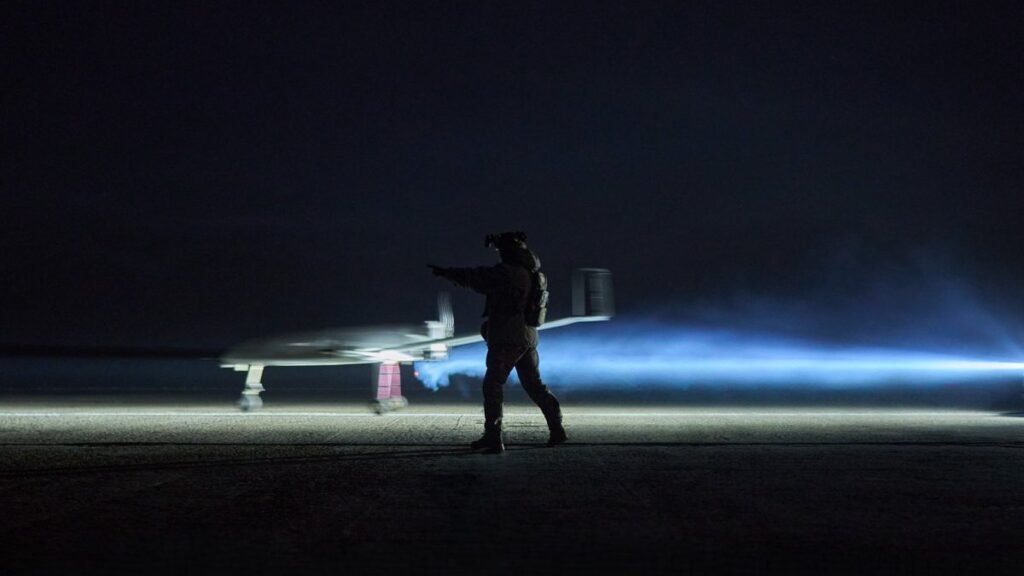
It’s not clear that all Liutyi drones have the 60-kg shaped-charge warhead. The drones are often described as carrying just 50 kg of explosives. It’s actually possible the drones can carry even bigger payloads. Missile expert Fabian Hoffman even claimed some An-196s are now packing 75-kg warheads.
A bigger warhead comes at a cost, however. “Given the long distances these [Ukrainian] drones must travel, increasing their warhead size would require adjustments to weight, fuel capacity and overall design,” Frontelligence assessed. In short, there’s a direct tradeoff. A bigger warhead means more destruction but a shorter range.
The reported recent development of a Liutyi model capable of traveling 2,000 km may imply some of the drones are carrying lighter warheads rather than heavier ones—trading away explosive payload in order to add fuel capacity.
So when Tatarigami senses Ukrainian drone strikes are becoming more destructive, there may be caveats. The most destructive raids might be the one striking closest to the Ukrainian border. Yes, a few An-196s or other drone types may range 2,000 km into Russia. But the ones dealing the real damage—potentially with the most powerful shaped-charge warheads—are probably hitting targets no more than 800 km from Ukraine.
Not coincidentally, SBU drones pummeled Saky air base in Russian-occupied Crimea on 3 August, reportedly destroying one Sukhoi Su-30 fighter jet and damaging another—and also damaging three Sukhoi Su-24 bombers. Saky is fewer than 300 km from the front line in southern Ukraine.
That’s well within range of a harder-hitting Liutyi drone.






Russia launched two Iskander-K missiles and 47 drones overnight, hitting multiple cities and towns in the morning. The Russian strikes left one person dead and four others injured across Dnipropetrovsk Oblast, damaging homes, businesses, and power lines.
Head of the Dnipropetrovsk Oblast Military Administration Serhii Lysak said Russian forces struck Dnipro with two Iskander-K missiles from occupied Zaporizhzhia Oblast early on 9 August. One missile was intercepted, but the other hit an industrial site.
Three civilians — a 41-year-old woman and two men aged 21 and 29 — were hospitalized in moderate condition. The blast destroyed vehicles, damaged a disused building, and set parts of the facility on fire.
Lysak reported that Russian artillery and drones continued attacking Nikopol, Myrivska, Marhanetska, and Pokrovska communities through the night.
In Nikopol, artillery fire killed a 56-year-old woman when her home collapsed. Rescue workers recovered her body from the rubble. A 62-year-old man was seriously injured and taken to hospital.
Six more houses were damaged, one was partially destroyed, and two farm buildings and a power line were hit. In Myrivska community, an FPV drone strike on 8 August set a farm building ablaze and damaged a car.
Attacks also targeted Mezhivska community in Synelnykove district. Lysak said drones struck both a detached house and an apartment building, sparking fires that emergency crews later contained.
In Balakliia, Kharkiv Oblast, the head of the Balakliia City Military Administration, Vitalii Karabanov, said Russian drones struck the city center, damaging residential and nonresidential buildings and igniting a fire.
Suspilne reported that a series of explosions occurred in Chuhuiv, Kharkiv Oblast, overnight.
Ukraine’s Air Force reported that air defenses intercepted 16 of the 47 Shahed-type and decoy drones launched from Russia’s Kursk, Millerovo, and Shatalovo areas, along with one of the two Iskander-K missiles from occupied Zaporizhzhia Oblast.
In total, the Air Force reported that 31 drones hit 15 locations, with Chernihiv, Sumy, Kharkiv, and Donetsk oblasts also coming under attack.
“As of 09:00, air defenses shot down or suppressed an Iskander-K cruise missile, 16 enemy Shahed-type drones, and various types of decoy drones in the north and east of the country. Hits from 31 drones were recorded at 15 locations,” the report reads.
The Institute for the Study of War noted that Russia’s continued strikes on major Ukrainian cities show the Kremlin’s lack of interest in good-faith negotiations. T
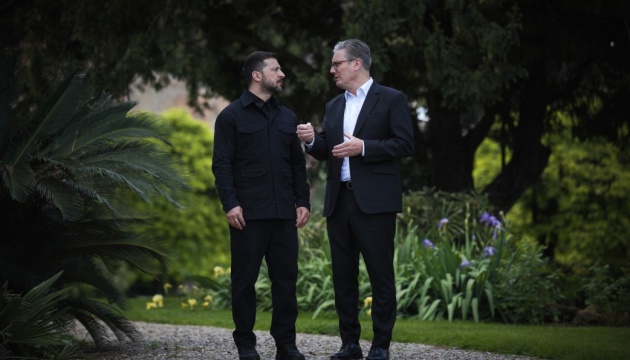

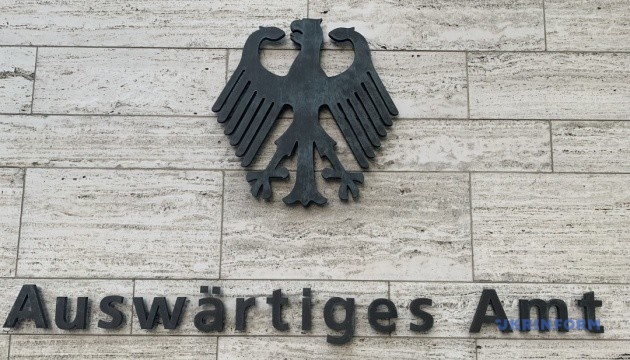

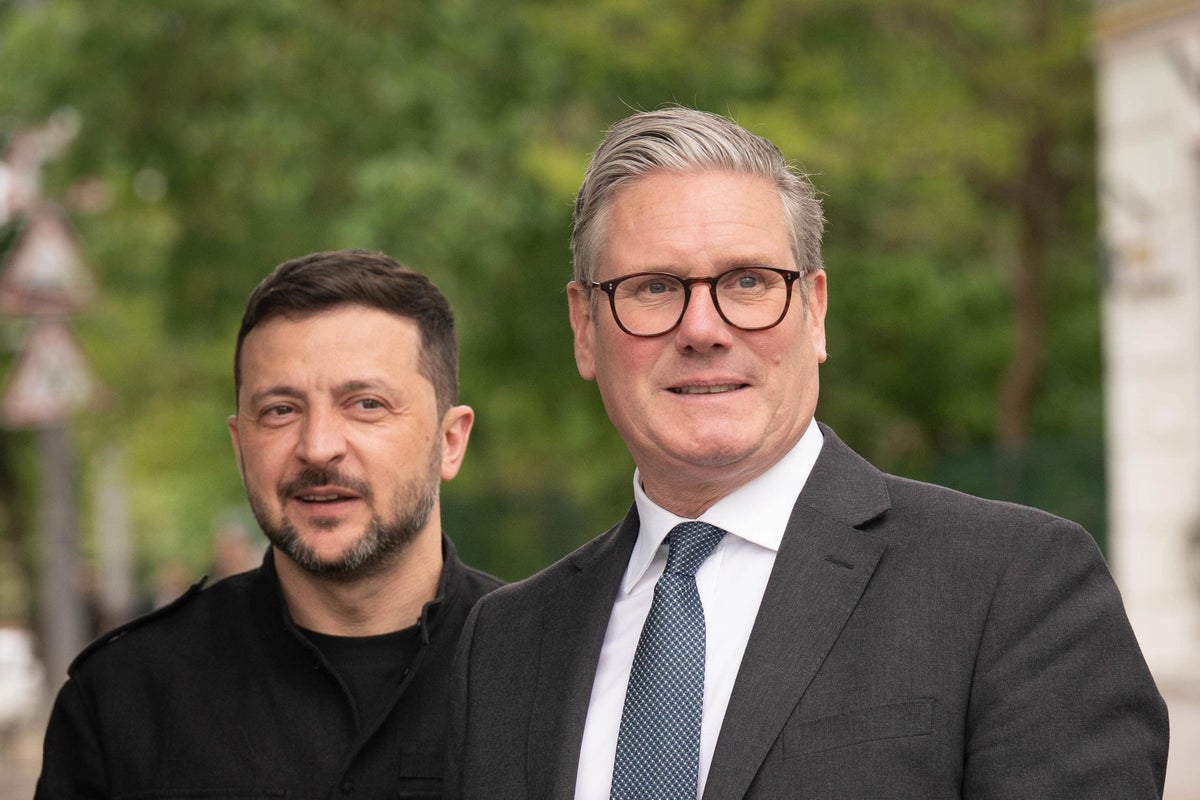
Labour foreign secretary David Lammy and US vice-president JD Vance host a meeting of national security advisers on Saturday, as Donald Trump prepares to meet Vladimir Putin next week

© PA Wire


Canada joins EU and UK to lower the Russian oil price cap to $47.60 in a move aimed at cutting Kremlin revenues while avoiding shocks to global markets. The change, due in early September, leaves Japan and the US as the only G7 members not adopting the reduced limit.
On 8 August, the Department of Finance of Canada confirmed Ottawa will match the European Union and United Kingdom in reducing the price cap on seaborne Russian-origin crude oil from $60 to $47.60 per barrel. The measure is part of the G7-led sanctions mechanism introduced in December 2022 to restrict Moscow’s war funding. The coalition also includes Australia and New Zealand.
Finance Minister François-Philippe Champagne said the cut would increase economic pressure on Russia and limit a crucial source of funding for its war in Ukraine. Foreign Minister Anita Anand stressed Canada’s commitment to applying sustained pressure on Moscow. Kyiv has pressed for an even lower $30 limit.
Most G7 members will introduce the lower cap in September. Japan and the US have not signed on, but Canada remains part of the Price Cap Coalition and may follow future reductions agreed within the group.


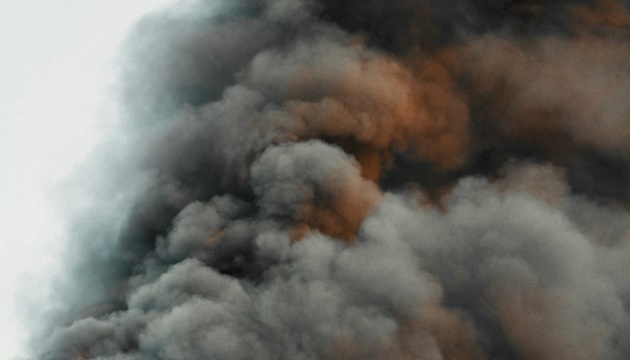



Ukraine is working to resolve a humanitarian crisis reportedly designed by Russia near the Georgian border, after Moscow intensified deportations of Ukrainian citizens in what Kyiv calls a systematic pressure campaign against neighboring countries.
The Georgia border crisis represents how Russia weaponizes individual Ukrainian suffering to destabilize regional cooperation, creating impossible choices for neighboring countries between humanitarian obligations and security concerns.
Ukrainian deportees stranded at the Russia-Georgia border ended their 3-day hunger strike on August 8 after Ukrainian Embassy representatives gained access to the checkpoint, but 96 people remain trapped in basement conditions at the Dariali crossing as Russia’s broader strategy continues.
“Our state is ready to take its people directly, rather than via Georgia and Moldova,” Ukraine’s Foreign Ministry stated. “The Russian Federation is ignoring this request, which indicates Moscow’s desire to deliberately create a humanitarian crisis on the Russian-Georgian border.”
Since mid-June, Russia has significantly escalated the deportation of Ukrainian citizens — primarily former prisoners who served sentences in occupied Ukrainian territories and were forcibly transferred to Russian detention facilities, according to the Ministry of Foreign Affairs.
Moscow then deports these individuals through the Georgia border rather than allowing direct repatriation to Ukraine, creating complications for regional cooperation. The operation transforms individual Ukrainian citizens into pressure tools against Georgia’s sovereignty and Ukraine’s diplomatic relationships.
This systematic campaign has resulted in 96 Ukrainians being stranded in a buffer zone at the Dariali checkpoint. People are being held with inadequate shelter, food, medical care, and legal support in basement conditions designed for much smaller numbers.
Desperation mounted as some deportees announced a hunger strike on August 5, demanding permission to cross into Georgia after being held in cramped conditions since mid-June.
Meanwhile, entry into Georgia is largely denied due to concerns over security and documentation. Many deportees are former prisoners with criminal backgrounds, creating legitimate security concerns for Georgian authorities while leaving the individuals trapped without legal status.
Since mid-June, Russia has significantly intensified deportations across the Georgia border.. While Ukraine successfully evacuated 44 citizens since late June, 96 remain stranded as Russian deportations continue.
The Ukrainian Foreign Ministry noted this “may indicate a deliberate Russian operation” designed to overwhelm Georgia’s capacity to handle deportees.
The crisis intensified in July when Moldova temporarily suspended transit for this category of deportees, leaving more people stranded at the Dariali checkpoint with no clear exit route to Ukraine.
Ukrainian Embassy intervention ended the hunger strike on August 8 after consular representatives gained access to the stranded deportees. The Ukrainian Foreign Ministry confirmed that diplomatic contact provided temporary relief from the protest.
A representative of the deported Ukrainian citizens “expressed gratitude to the diplomatic mission for efforts to resolve the humanitarian crisis artificially created by the Russian side,” Ukraine’s Foreign Ministry reported after the hunger strike ended.
Ukraine successfully evacuated 44 citizens from the border zone since late June, but Russian deportations continue outpacing rescue efforts as Moscow maintains pressure on regional cooperation mechanisms.
The Ukrainian Foreign Ministry noted that most deportees are “people who have previously been brought to criminal responsibility,” including those who served sentences in occupied Ukrainian territories and were forcibly transferred to Russian facilities, as well as Ukrainian citizens convicted of crimes within Russia.
According to the Foreign Ministry, rather than allowing direct repatriation across the Russia-Ukraine border, Moscow deliberately routes deportees through Georgia to create complications for both countries. This forces Georgia to choose between humanitarian obligations and legitimate security concerns while straining Ukraine’s diplomatic resources.
The crisis intensified when Moldova temporarily suspended transit for this category of deportees, eliminating the main evacuation route and leaving more people stranded at Dariali with no clear path home.
Georgian authorities have expressed willingness to transport deportees to Tbilisi Airport, but only after Moldova confirms readiness to receive them as transit passengers, according to the MFA. This dependency on third-party coordination demonstrates how Russia’s strategy complicates regional cooperation.
The Dariali crossing represents the only viable exit route for Ukrainians deported from Russia, making Georgia’s cooperation essential while placing the country in an impossible position between humanitarian duties and security concerns.
Ukraine continues working with international organizations including the Red Cross, UNHCR, and International Organization for Migration to address the crisis, but Russia’s systematic approach suggests pressure will continue as Moscow weaponizes human suffering for strategic advantage.


Romania is investigating Russia over chlorine-tainted Azerbaijani oil after refinery testing revealed contamination that could have caused severe equipment damage and major fuel shortages. G4Media reports, citing official sources, that the suspected sabotage has disrupted shipments, triggered an official crisis declaration, and raised alarm in Italy and Czechia.
According to G4Media’s official sources, Romanian authorities are examining whether Russia deliberately contaminated Azerbaijani crude intended for OMV Petrom’s Petrobrazi refinery. The oil, transported through the Baku–Tbilisi–Ceyhan pipeline and shipped onward to Romania, was found to contain chlorine levels high enough to corrode refinery systems. Officials believe such damage could have led to prolonged shutdowns and serious disruption of the country’s fuel supply.
G4Media notes that part of the chlorine-tainted Azerbaijani oil had already reached Italy, where energy company Eni confirmed contamination in one of its refineries, according to Reuters. The Czech company Orlen Unipetrol, which was also due to process the batch, halted all operations involving the shipment.
Sources cited by G4Media say the contamination could have been carried out through a relatively simple sabotage operation along the 1,770 km pipeline route. The suspected method involved injecting several tankloads of chlorine into the crude stream during transit, a step that could have been executed without major technical obstacles.
The Baku–Tbilisi–Ceyhan pipeline operator BTC Co., managed by BP, acknowledged being informed of possible quality issues linked to organic chlorides in some loads of its crude mix. BTC Co. stated it is assessing oil quality at all facilities along the route. Organic chlorides are sometimes used in oil extraction but must be removed before pipeline transport, as they can cause severe corrosion to refinery equipment.
Similar contamination incidents have had serious market impacts in the past. In 2019, Russian oil exports via the Druzhba pipeline were halted after high levels of chlorides were detected, forcing buyers to seek alternative supplies at short notice.
Romania’s emergency release of fuel stocks is intended to cover domestic demand until uncontaminated shipments arrive. G4Media reports that swift action by the Ministry of Energy helped avert immediate shortages, but concerns remain over the spread of contaminated crude in storage tanks and processing units across Europe.
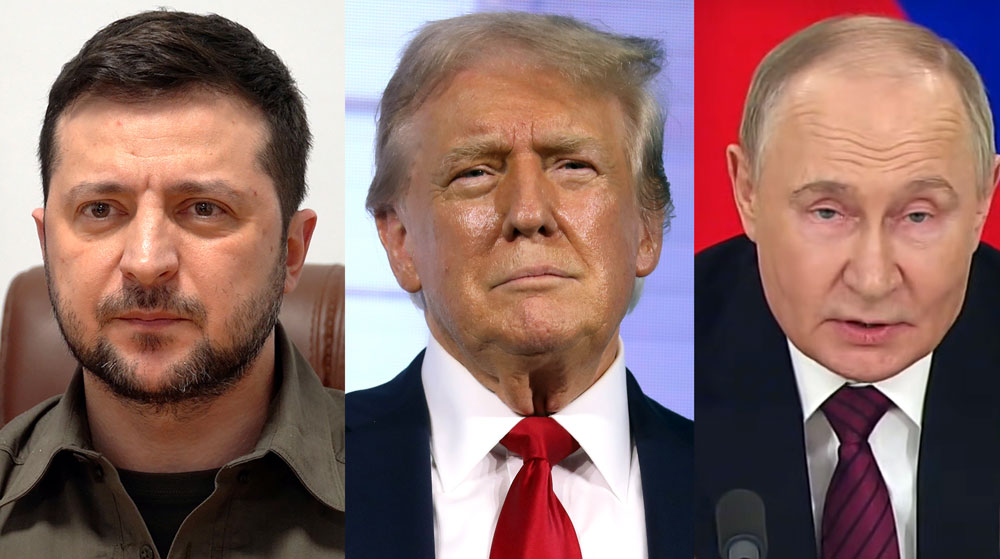

Senior officials from the US, Ukraine, and several European countries will meet this weekend in a high-stakes UK meeting to coordinate positions before President Trump’s planned talks with Russian President Vladimir Putin, Axios reported on 8 August. Diplomats are working to align strategies and prevent any agreement that could cement Russian territorial gains in Ukraine.
Axios said the weekend gathering was arranged after a series of conference calls between US, Ukrainian, and European officials, the third in as many days. The idea for an in-person meeting in the UK came up during a call on Friday, 8 August. Discussions will focus on producing a common stance that could shape Trump’s approach when he meets Putin.
According to Axios, the urgency stems from concerns among Ukraine and NATO allies that Trump might accept Kremlin proposals without fully taking their positions into account. The Kremlin’s reported offer would freeze Russian control over occupied parts of Kherson and Zaporizhzhia oblasts, including the Zaporizhzhia nuclear power plant, as well as areas of Luhansk and Donetsk oblasts Russia has held since the invasion.
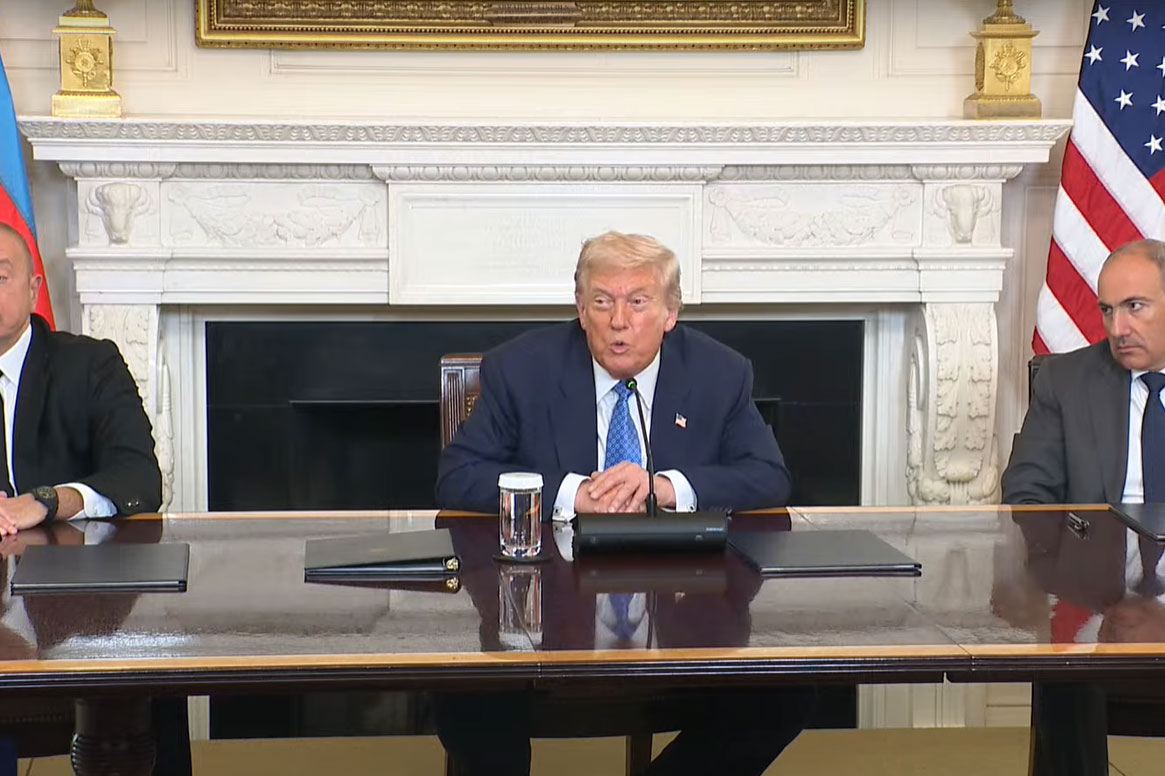
Axios cited two sources saying that during a call on 6 August, White House envoy Steve Witkoff briefed Ukrainian President Volodymyr Zelenskyy and European leaders on his meeting with Putin in Moscow. The initial impression among some participants was that Putin might drop his claim to partially occupied Kherson and Zaporizhzhia oblasts, a shift from earlier Russian demands.
However, Axios said that in a follow-up video call the next day, Witkoff clarified that Putin had agreed only to freeze positions in those oblasts, leaving large portions under Russian occupation. Ukrainian officials remain unsure about the exact details of the Kremlin’s terms and the US position. One
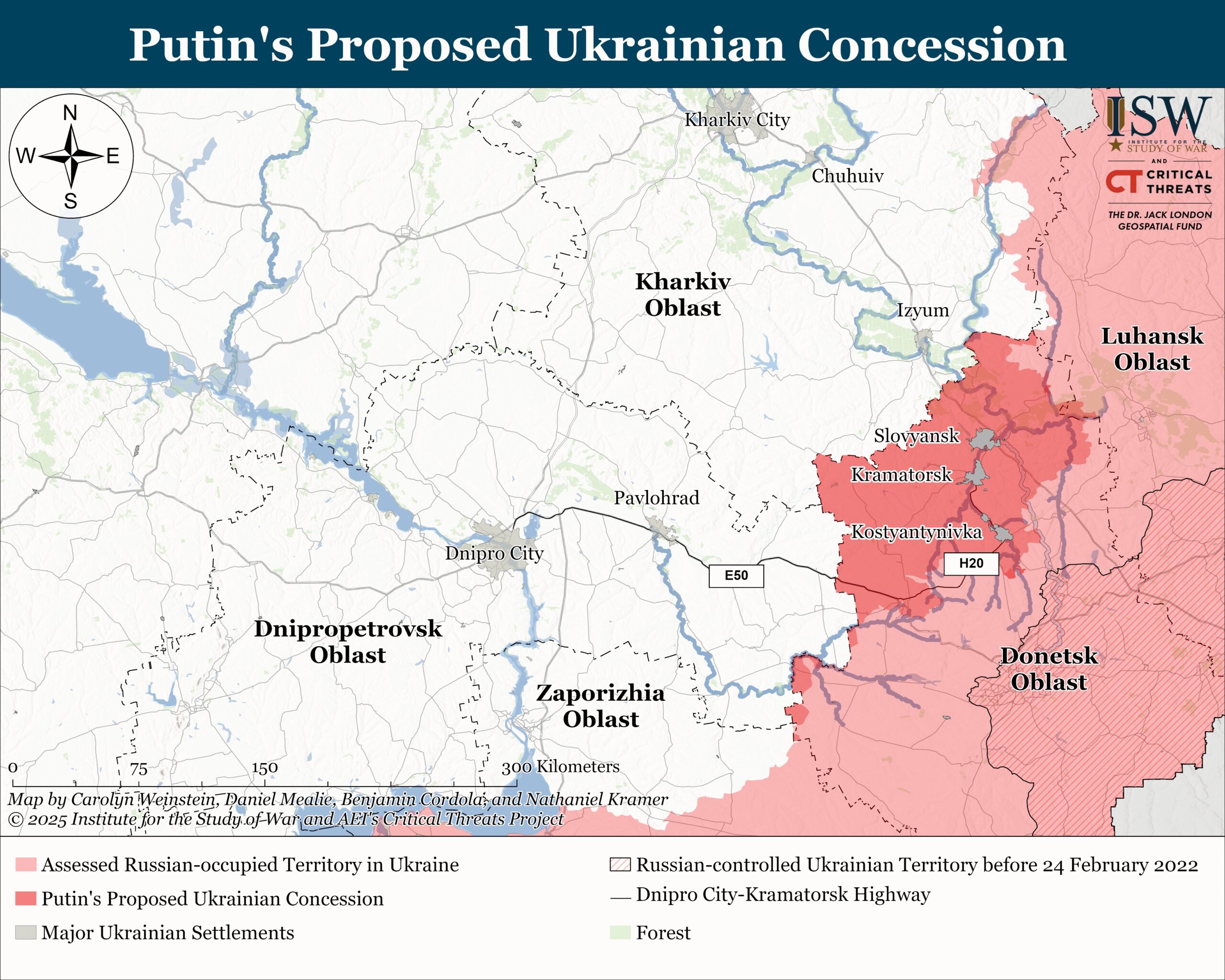
Trump announced that he will meet with Putin in Alaska on 15 August. The US President claimed the sides are “getting very close” to a deal. He has spoken of “some swapping of territories to the betterment of both countries” and suggested returning some occupied areas to Ukraine. According to Trump, Zelenskyy is preparing a legal arrangement that would allow him “to sign something” without violating Ukrainian law.
Western officials cited by Axios view the UK meeting as an opportunity to present a united message to Trump before his high-profile summit with Putin. The White House has declined to comment on the planned ally meeting.







The meeting between the two leaders will be the first US-Russia summit since 2021

© AP


The Ukrainian president has predictably rejected Trump-Putin’s plan to cede territory to Russia, calling any such move unconstitutional and unacceptable. Volodymyr Zelenskyy said Ukraine will not give land to the occupier in exchange for a ceasefire, stressing that its borders are already defined in the Constitution and cannot be altered.
In his 9 August morning video address, Zelenskyy said the answer to Ukraine’s territorial question is already in the Constitution.
“No one will retreat from this and no one can. Ukrainians will not gift their land to the occupier,” he stated.
He described any settlement reached without Ukraine’s participation as a “dead decision” that would never work, warning that real and lasting peace must be respected by all parties.
The President said Ukraine is ready to work with US President Donald Trump and international partners to secure agreements that will hold over time.
“We are ready together with President Trump, together with all partners, to work for real, and most importantly, lasting peace – peace that will not fall apart because of Moscow’s wishes,” he noted.
According to earlier reports, the Kremlin’s proposal would see Ukraine cede unoccupied, strategically important areas of Donetsk Oblast to Russia while freezing the frontline elsewhere. Analysts assess that such a move would leave Kyiv in a weaker defensive position and give Moscow a better launch point for future offensives.



Kremlin officials are reportedly demanding that Ukraine surrender the Ukrainian “fortress belt” in Donetsk Oblast before any ceasefire, a move the Institute for the Study of War (ISW) says is deliberately designed to be unacceptable. The think tank assessed that Moscow “lacks the means to capture” the fortified cities and instead wants Kyiv to abandon them “in exchange for nothing.”
Bloomberg reported on 8 August that Vladimir Putin’s proposal would require Ukraine to withdraw from Ukrainian-controlled areas in Donetsk and Luhansk oblasts, along with Crimea, before any negotiations. The plan makes no mention of Russian withdrawal from the Zaporizhzhia Nuclear Power Plant or from positions in Kharkiv, Sumy, Dnipropetrovsk, and Mykolaiv oblasts.
According to the Wall Street Journal, two European officials briefed on the offer said it included two phases: Ukraine would first withdraw from Donetsk Oblast and freeze the frontline, followed by a peace plan to be agreed between Putin and US President Donald Trump, and later negotiated with Ukrainian President Volodymyr Zelenskyy.
Trump said at a press conference on 8 August that “there will be some swapping of territories to the betterment of both,” adding there would be “no further announcements until August 9 or later.”

ISW stressed that conceding the Ukrainian fortress belt—a line of four major cities and several towns reinforced since 2014—would allow Russian forces to avoid “a long and bloody struggle for the ground.”
The belt, stretching dozens of kilometers along the H-20 highway from Sloviansk to Kostiantynivka, has blocked Moscow’s advance for over a decade. Losing it would push the front 82 kilometers deeper into Ukraine, positioning Russian forces within striking range of Kharkiv and Dnipropetrovsk oblasts.

The think tank warned that Russian forces “will almost certainly violate any future ceasefire or peace agreement” without robust monitoring and security guarantees. Ceding the belt would also force Ukraine to urgently fortify open terrain at the Donetsk Oblast border, which ISW described as “significantly less defensible than the current line.”
Russian troops have repeatedly failed to seize Sloviansk, Kramatorsk, and Druzhkivka since 2022. ISW noted that taking them now would require years of combat and high losses, making a negotiated surrender far more advantageous for Moscow. It would also spare Russian forces from costly battles for Pokrovsk and Myrnohrad, and allow them to bypass Ukraine’s westernmost Dobropillia-Bilozerske defensive line.
While the proposal circulated, the Ukrainian Air Force said Russia launched four jet-powered drones and 104 Shahed-type strike and decoy drones overnight on 7–8 August. Of these, 79 were downed, but 26 struck ten locations, damaging civilian and industrial infrastructure in Kharkiv City’s Saltyvskyi Raion, Bucha Raion in Kyiv Oblast, and in Sumy and Odesa oblasts.
ISW concluded that these continued strikes, combined with Kremlin messaging that “only Putin will dictate the terms of peace,” show the Russian leader “remains disinterested in good-faith negotiations” and still seeks Ukraine’s capitulation.


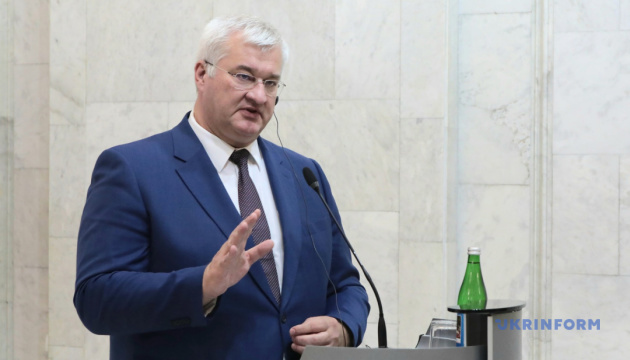


Volodymyr Zelensky has warned that Ukraine will not give up land, following Donald Trump’s claim that a peace deal with Russia may involve “some swapping of territories”.

© Volodymyr Zelensky
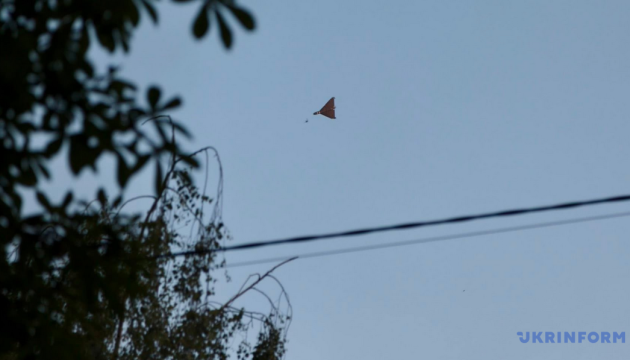

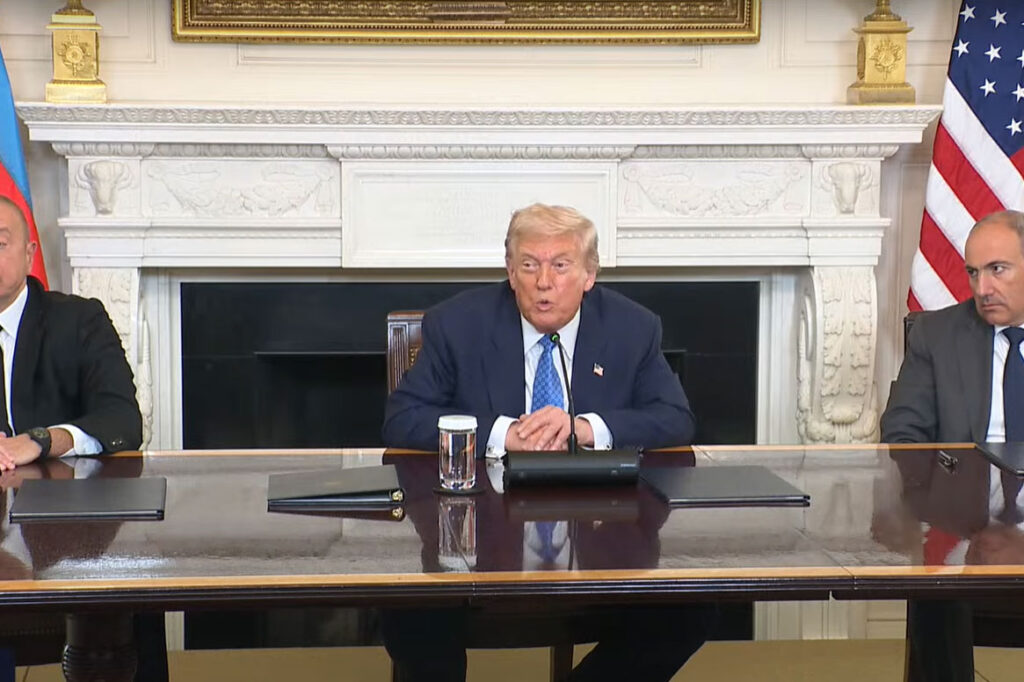

After his own deadline for Moscow to accept a ceasefire expired without any sanctions, US President Donald Trump said he will meet Russian leader Vladimir Putin in Alaska on 15 August. Speaking after signing a peace declaration with the leaders of Armenia and Azerbaijan on 8 August, Trump said the talks would include proposals for Ukraine to cede territory to Russia.
Trump had earlier warned Putin that failing to meet his ceasefire deadline would trigger US sanctions. The deadline silently expired on 8 August. Instead, he told reporters,
“I will be meeting very shortly with President Putin. It would have been sooner… I guess there are security arrangements that unfortunately people have to make.”
Later the same day, he confirmed on his Truth Social account that the summit would take place in Alaska next Friday, 15 August.
The US President claimed the discussions were ostensibly “getting very close” to a deal and said the arrangement would allegedly bring “betterment” to both sides.
“We’re looking at territory that has been fought over for 3.5 years… We will get some back. We will get some — some switched. There will be some swapping of territories,” he said, calling it “very complicated” but ultimately positive.
Russian presidential aide Yuri Ushakov told Russian media the meeting would happen on 15 August in Alaska, describing it as “logical” because the two countries are close neighbors. He added that the Arctic and Alaska are where their economic interests meet, with potential for large-scale joint projects. Ushakov said the key topic would be options for a “long-term settlement” of Russia’s war in Ukraine.
The Wall Street Journal reported that US special representative Steve Witkoff met Putin in Moscow on 6 August for three hours. Sources told the paper that Putin had presented a two-stage proposal: first, the withdrawal of Ukrainian forces from Donetsk Oblast and a freeze of the front line, and second, a final peace deal to be agreed with Trump and later discussed with Ukraine.
The Wall Street Journal, citing a senior European diplomat and a Ukrainian official, said Putin could propose that Russia officially control part of the occupied Ukrainian territories in exchange for pulling troops from other areas. This aligns with Trump’s public stance.
“He has to get everything he needs. He is getting ready to sign something, and I think he is working hard to get that done,” Trump suggested of Ukrainian President Volodymyr Zelenskyy.
During his remarks, Trump again repeated his debunked claim that the United States had spent $350 billion on Ukraine, saying,
“$350 billion… the United States has spent on that. It should have spent nothing. It should have never happened.”
He praised NATO allies for increasing their defense spending from 2% to 5% of GDP, adding,
“Europe wants to see peace. European leaders want to see peace. President Putin, I believe, wants to see peace and President Zelensky wants to see peace.”
Although Russia’s 2014 invasion continued throughout Trump’s pre-Biden first term, he again claimed the war would “never have happened” if he had been president earlier, blaming Biden and citing destruction in Ukraine:
“Magnificent towers, the spires… considered the most beautiful in the world… they are all in a million pieces laying on the ground… So sad. Millions of people have died.”
It is unclear what “towers and spires” Trump had in mind, as Ukraine has not lost any such world-famous landmarks in the war — the image appears to exist only in his imagination, though Russia has indeed obliterated entire cities like Popasna, Bakhmut, Mariupol, and Vovchansk.


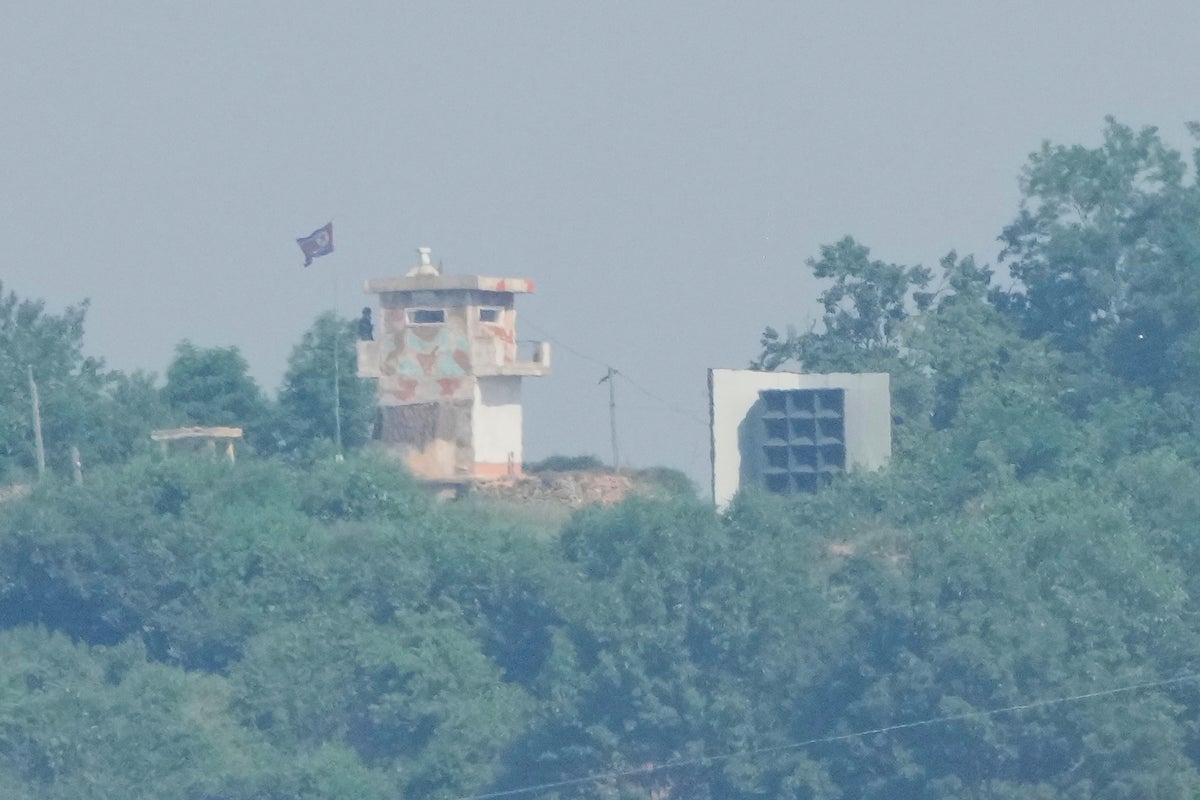

© Copyright 2025 The Associated Press. All rights reserved.




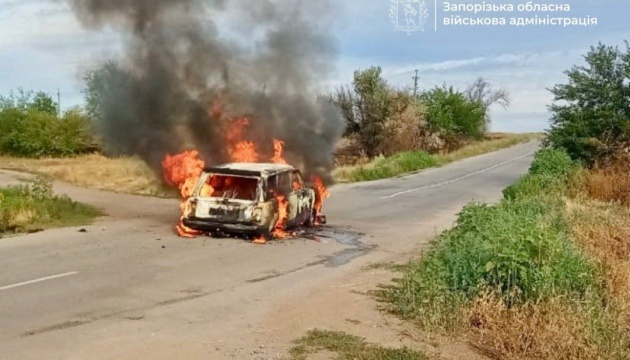


© Sputnik
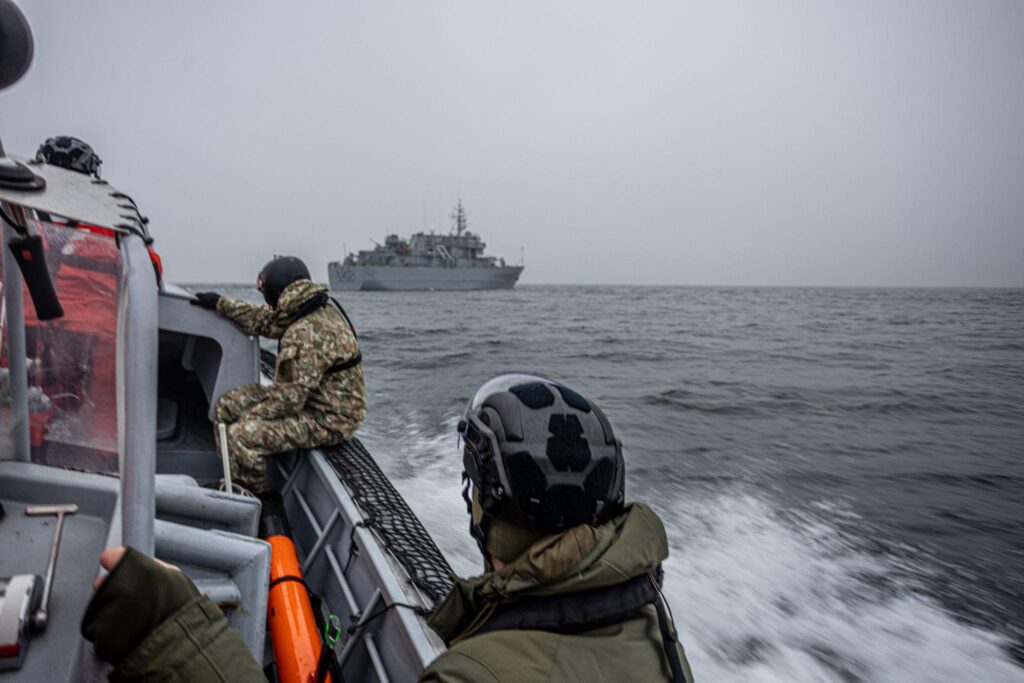

Lithuania may have become the target of a Russian underwater drone, right off its own coast. In early August, near the resort town of Nida, the drone likely entered Lithuanian territorial waters from the direction of Russia, Delfi reports.
Locals noticed the unusual behavior of a border patrol boat. A coast guard vessel was seen chasing an unidentified object in the Curonian Lagoon, an area where active operations are rarely conducted.
Aistė Žalneraitienė, senior specialist at the State Border Guard Service, confirmed the incident: on 2 August, a suspicious object was indeed detected in the reported place and is currently being examined by the Criminal Investigation Department.
Preliminary assessments suggest the drone may have been launched from Russia’s Kaliningrad Oblast, which is one of the main hubs of Russian military activity near NATO borders.
This is not the first incident involving Russian unmanned systems in Lithuania. On 1 August, debris from a Gerbera drone, widely used in Ukraine’s war, was found at the Gaižiūnai military training ground in the Jonava District. The drone was likely launched from Belarus. The incident was confirmed by Lithuania’s Minister of National Defense, Dovilė Šakalienė.
A week earlier, another drone of the same type crashed near the closed Šumskas border checkpoint, almost directly on the Belarusian border.
In July, a Russian drone also violated Lithuanian airspace near Vilnius. It flew at an altitude of 200 meters and remained in Lithuanian airspace for about half an hour.
Following this series of violations, Lithuanian armed forces will implement additional security measures.
Earlier, Russia’s Foreign Intelligence Service Head, Sergey Naryshkin, warned that Poland and the Baltic states would be the first to suffer in the event of a war between Moscow and NATO. In 2025, Russia plans to train and station up to 150,000 additional troops in Belarus.